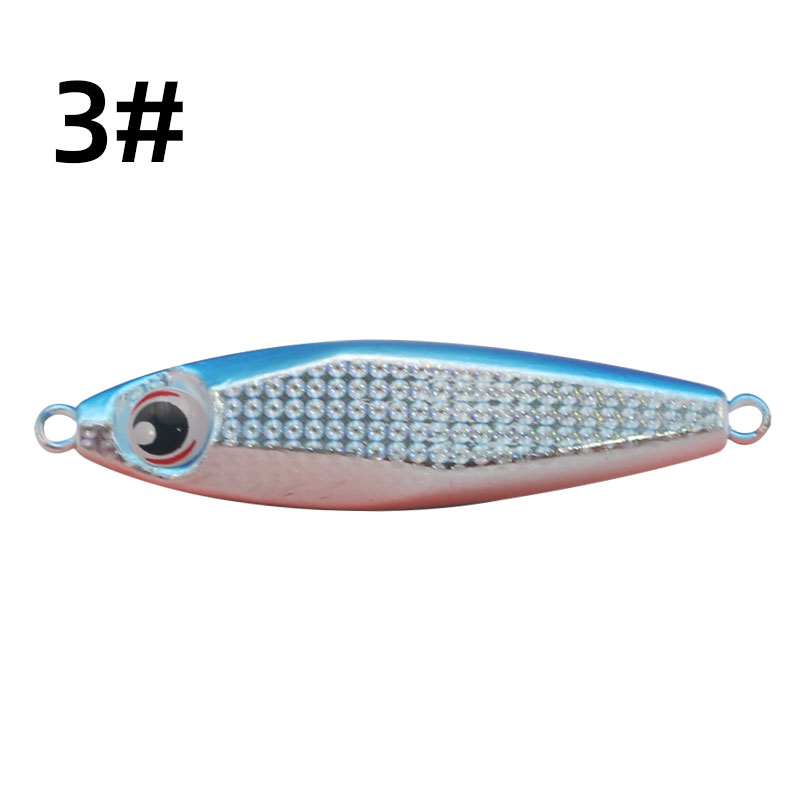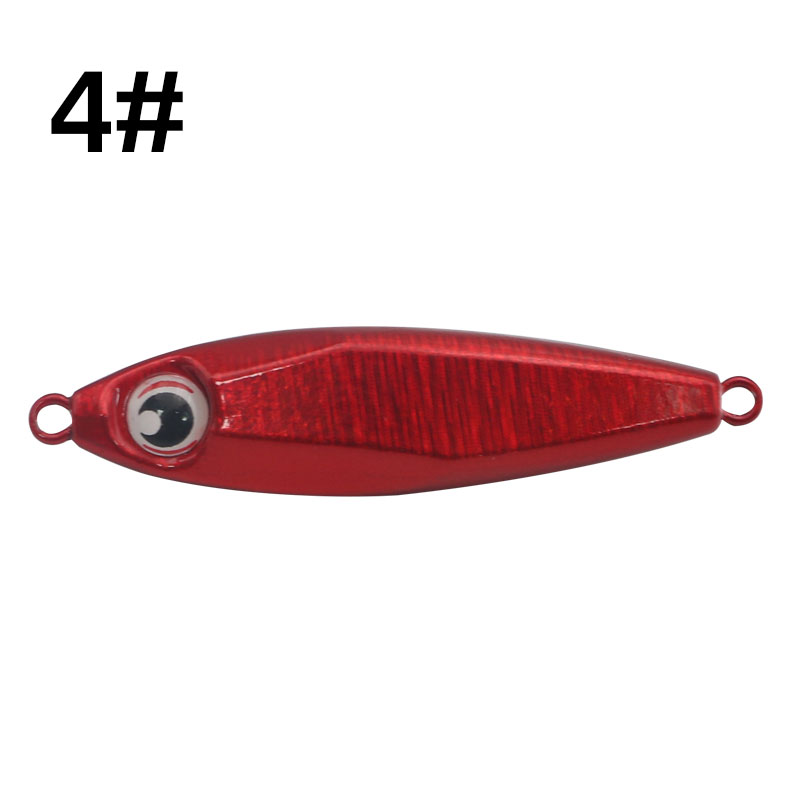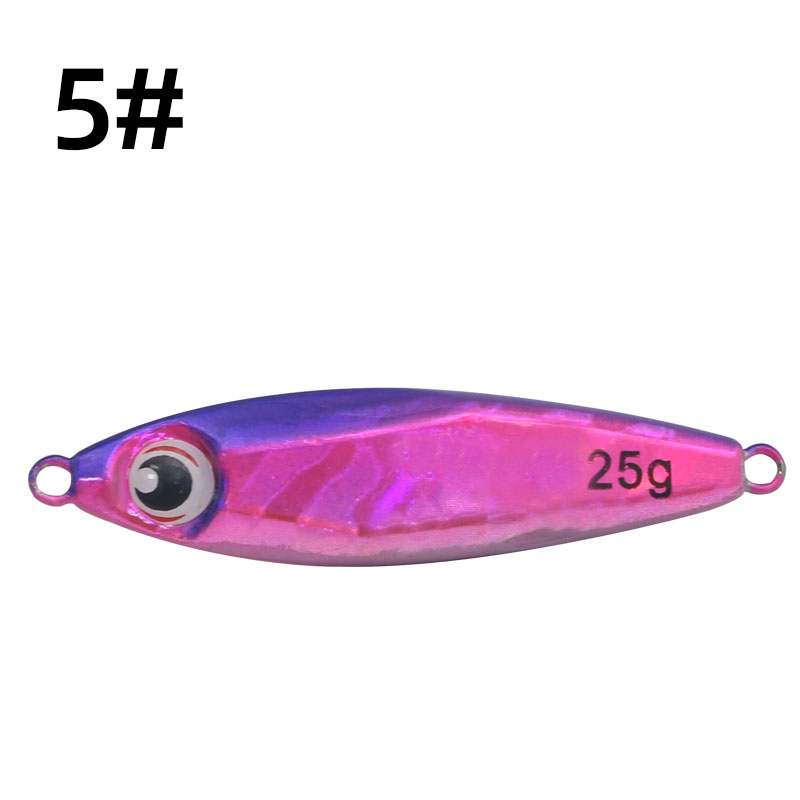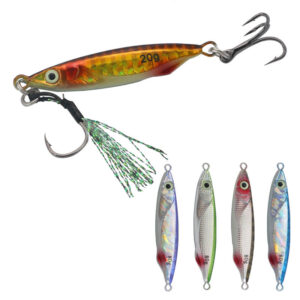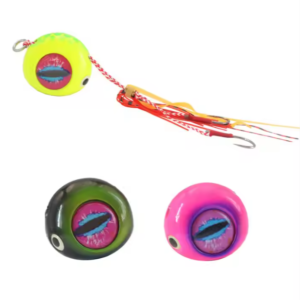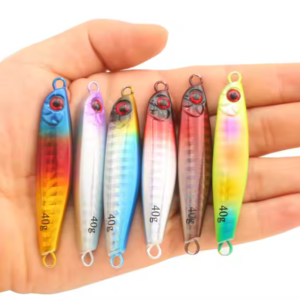Metal Fish Lure Long Throw Falling Double Hook with Warped Mouth Bass Bait for Hot Sea Fishing
Extra informatie
| Kleur | optional |
|---|---|
| Material | Lead, metal |
| Weight | 25g,30g |
| Model | TX-36 |
| Package | PVC Bag |
Product Details:
Mastering Metal Jig Fishing: Tips, Tricks, and Techniques for All Anglers
Invoering
Metal jigs are essential for any angler aiming to elevate their fishing game. These lures, with their unique weight and movement, are designed to resemble injured baitfish, making them an irresistible target for predatory fish. From saltwater giants like tuna to freshwater favorites like bass, metal jigs can attract a wide variety of fish. In this article, we’ll cover the ins and outs of metal jig fishing—from understanding the fundamentals to advanced techniques. Whether you’re new to fishing or an experienced angler, this guide will help you become a pro at fishing with metal jigs.
What Makes Metal Jigs So Effective?
Metal jigs are highly effective lures that sink quickly and mimic the movements of struggling baitfish. Made from durable metals, they are designed to withstand the rigors of both freshwater and saltwater fishing. Metal jigs come in various shapes, sizes, and colors, allowing anglers to adapt to different fishing conditions. They’re excellent for targeting fish at various depths, making them especially useful for deep-sea fishing but equally effective in shallower environments.
The dense weight and streamlined shape of metal jigs give them an erratic, fluttering action that draws the attention of predatory fish, even those that may be more cautious or inactive. This combination of durability, versatility, and natural movement makes metal jigs a top choice for anglers everywhere.
The Benefits of Fishing with Metal Jigs
- Depth Control and Coverage: Metal jigs allow you to control depth effectively, whether you’re targeting bottom-dwelling species or fish suspended at mid-depths. Their heavy design helps them reach deep water quickly, giving you more time in the strike zone.
- Attractive, Realistic Action: The natural flutter and darting motion of metal jigs, combined with reflective or holographic finishes, closely resembles the movement of wounded baitfish. This action can trigger even the wariest fish to strike.
- Versatility Across Water Types and Species: Metal jigs are effective for a wide variety of fish species in both saltwater and freshwater, from tuna and amberjack to bass and pike. Their versatility means you can fish confidently in many environments.
- Durability and Resistance: Unlike soft plastics, metal jigs are highly durable, making them ideal for environments with rocky structures or areas with strong fish species that may damage other lures.
Choosing the Right Metal Jig: Factors to Consider
- Weight and Size: The right weight is crucial for the depth and conditions you’re fishing in. Heavier jigs (100 grams and up) are better for deep waters and strong currents, as they can sink faster and are less likely to be swept away by currents. Lighter jigs (20-60 grams) are perfect for shallow waters and slower currents.
- Color and Finish: Reflective colors like silver and gold work well in clear water, as they mimic the flash of baitfish. In murky or deep waters, UV colors or darker finishes become more visible to fish. Some anglers prefer holographic or glow-in-the-dark finishes for added visibility in low-light conditions.
- Shape and Style: Slim, elongated jigs work well for fast retrieves or high-speed jigging, while wider, flat-sided jigs flutter more on the fall, making them ideal for slow-pitch jigging. Understanding the strengths of each shape can help you adapt to different fishing styles and target species.
- Hook Types and Placement: Many metal jigs come with assist hooks on the top, which improve hook sets when targeting larger fish. For smaller species, single hooks on the bottom of the jig can reduce snagging and make it easier to release fish.
Popular Techniques for Fishing with Metal Jigs
- Vertical Jigging: Drop the jig to the bottom, then raise and lower it repeatedly. The vertical motion creates a flashing movement that simulates a panicked baitfish. Jig it through the water column to attract fish at different depths.
- High-Speed Jigging: Ideal for fast-moving predators, this method involves reeling in quickly while giving subtle rod jerks to make the jig appear as a fleeing baitfish. It’s an aggressive technique suited for species like tuna, mackerel, and kingfish.
- Slow-Pitch Jigging: In slow-pitch jigging, the goal is to move the jig in a slow, rhythmic retrieve, allowing it to flutter down between pulls. This technique keeps the lure in the strike zone longer, making it great for bottom-dwelling species like grouper and snapper.
- Long-Drop Technique for Hesitant Fish: For fish that are cautious or seem spooked, a longer drop with minimal jigging can be effective. The jig’s slow, natural descent may appear less threatening, encouraging fish to strike.
- Twitch and Pause Technique: This method involves a few quick jerks of the rod, followed by a pause. This action makes the jig dart and then slowly sink, simulating a wounded fish struggling to escape—a motion that can trigger reaction strikes.
Top Situations to Use Metal Jigs
- Deep-Water or Offshore Fishing: When targeting species like amberjack or grouper in deeper water, metal jigs are essential. Their weight allows them to sink quickly, reaching the bottom where these fish are often found.
- Fishing Near Structures: Metal jigs excel around structures such as reefs, shipwrecks, and rocky outcrops. The jig’s action can lure fish out from hiding, making them more accessible to anglers.
- Strong Current Areas: In areas with fast-moving water, metal jigs hold their course better than lighter lures, making them ideal for maintaining control in challenging conditions.
- Murky or Low-Light Conditions: For areas with low visibility, opt for jigs with reflective or glow-in-the-dark finishes. These jigs stand out more and can attract fish in darker or murky waters.
- Open Water for Pelagic Species: When targeting open-water species like tuna, mahi-mahi, or kingfish, metal jigs perform well due to their streamlined shape and high-speed jigging capability.
Advanced Tips for Metal Jig Fishing Success
- Vary Your Retrieve: Don’t stick to one retrieve speed. Try both fast and slow retrieves, or combine a few quick jerks with pauses to see what catches the fish’s attention. Fish behavior can vary by day, so flexibility is key.
- Use a High-Sensitivity Rod: The right rod helps you detect subtle bites, especially when fishing in deep water. Sensitive rods allow you to feel every tap, making it easier to set the hook when fish strike.
- Watch the Line for Sudden Slack: If your line goes slack while the jig is dropping, it could mean a fish has taken the bait. React quickly with a firm hook set to avoid missed opportunities.
- Upgrade Your Hooks for Big Fish: Standard hooks on some jigs may bend under pressure from large fish. Consider upgrading to heavy-duty hooks if you’re targeting bigger species like tuna or amberjack.
- Match Local Baitfish: If you’re fishing in an area with a specific baitfish population, try to use a jig that resembles their color and size. This can increase your odds of a strike, as fish are more likely to go for prey they recognize.
- Experiment with Jigging Angles: Instead of dropping your jig straight down, try casting at an angle and letting it drift before retrieving. This technique can help you cover a larger area and is especially effective when fish are spread out.
Common Mistakes to Avoid When Using Metal Jigs
- Choosing the Wrong Weight: If the jig is too light, it won’t reach the target depth; if it’s too heavy, you might lose the subtle action that attracts fish. Adjust the jig weight based on depth and current conditions for the best results.
- Ignoring Water Clarity: Water clarity affects visibility, and your jig’s color should match accordingly. In clear water, use natural colors; in murky water, opt for brighter or UV colors to increase visibility.
- Not Adjusting for Fish Behavior: Some fish respond to fast retrieves, while others may strike during slower, more deliberate movements. If you’re not getting bites, switch up your technique instead of sticking with the same approach.
- Neglecting Hook and Line Maintenance: Sharp hooks and strong lines are essential for landing fish, especially larger ones. Regularly check your hooks for sharpness and replace any worn or weakened line.
- Ignoring Environmental Cues: Pay attention to changes in tide, light, and temperature. Fish are more active during certain times, and adjusting your jigging technique based on these cues can make a big difference.
Conclusie
Fishing with metal jigs is a rewarding and adaptable technique that allows anglers to target a wide variety of fish species. By selecting the right jig, experimenting with different techniques, and adapting to water conditions, you can significantly improve your chances of success. Metal jigs are durable, effective, and versatile, making them a staple in any angler’s tackle box. So the next time you’re out on the water, bring along a few metal jigs and put these tips into practice to take your fishing experience to the next level. Whether you’re fishing in deep seas, rocky shorelines, or freshwater lakes, metal jigs offer endless opportunities for adventure and success.
Gerelateerde producten
-

Metal Jig Lure Fishing Jigs Saltwater Metal Long Casting Shore Jigging Fishing Lures
-

wholesale Metal Blade Lures Fishing Lure Hard Bait Material Fishing For Sale
-

Fishing Running Sliding Replace Jigs Saltwater Fishing Lure Madai Jig
-

Smano jigs blanks 3d fishing lure eyes jigs artificial baits slow jigging fishing luresFast For Sale




